The Serial Effect
Despite the ubiquitous appeal of ‘saas-bahu’ family dramas on television and their influence on fashion, they remain excluded from ‘elite’ fashion as the comparatively unrefined sartorial pleasures of the masses.
Arti Sandhu
As I switch between images from the recently held India fashion weeks to the videos posted by Colors TV on social media, the sustainable, handspun, handloom fashions clash with loud explosions of colour and embellishments. Bold yet minimal polka dots on cream linen on one side and an all-dressed-in-red cast preparing for Karva Chauth on the other, resting bitch face expressions on models on one side and a panoply of facial expressions to suit the twists and turns of a single scene on the other.
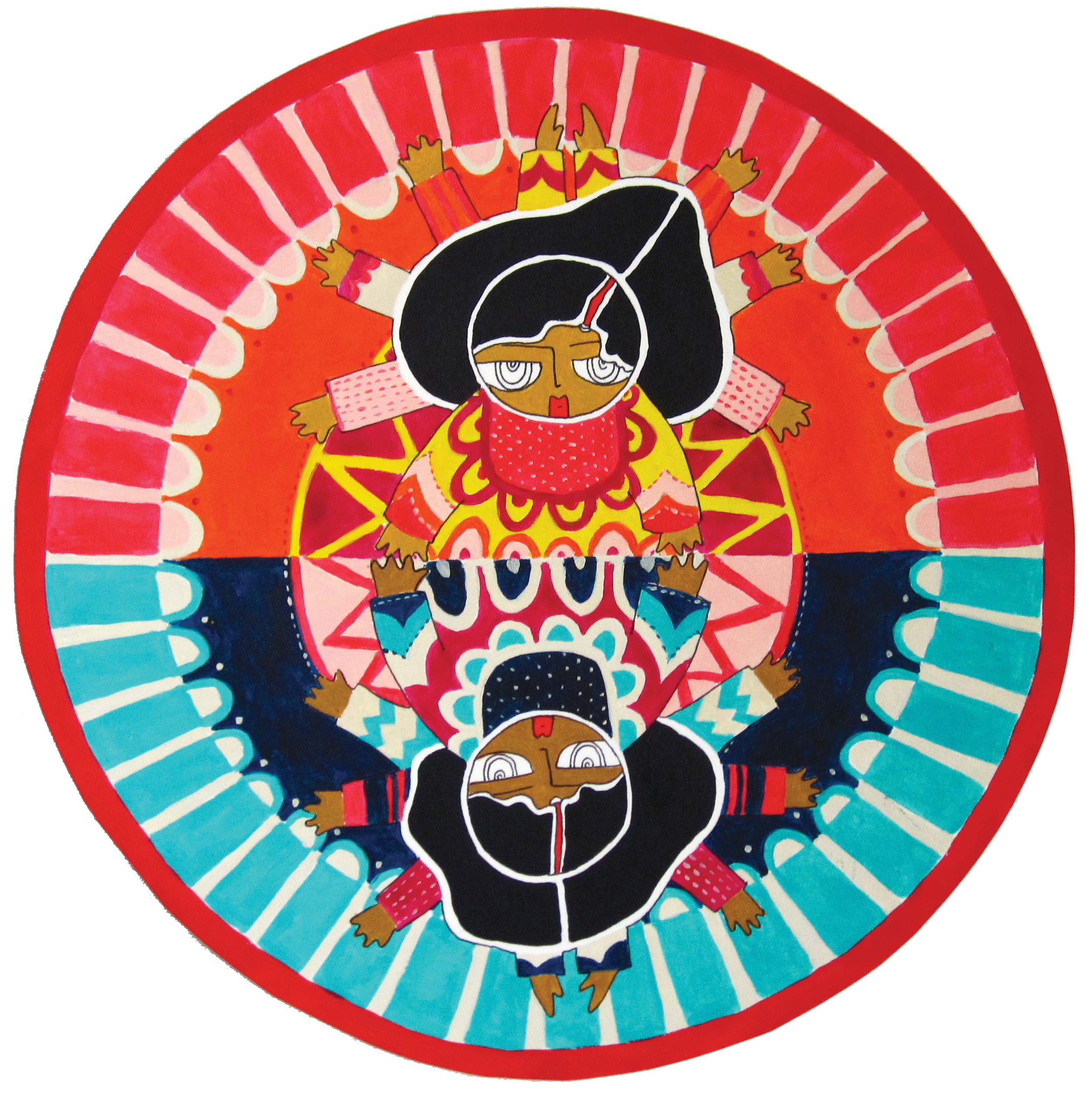
The latter, of course, are images we have become accustomed to seeing on Indian television serials, some of which come under the category of ‘saas-bahu’ family dramas. They are infectious in their exuberance and influence fashion through trickling down and spreading across small towns and cities in India as well as amongst the Indian Diaspora overseas. They regularly feature in branding strategies and sales pitches from local bazaars to Surat’s sari mills, and form the basis of tailor talk while women negotiate their Diwali or Navaratri wardrobes. They pop up in the chatter on social media platforms, and can now be purchased online through simply searching for your favourite on-screen character.
Despite their ubiquitous appeal and their contribution to the enjoyment and experience of fashion in India, the sartorial aesthetics and design of television costumes rarely get any attention from high-brow fashion publications. This exclusion highlights the demarcation between elite fashion and (what it considers) comparatively unrefined sartorial pleasures of the masses; and I must admit that I too was guilty of this biased oversight till a few years ago.
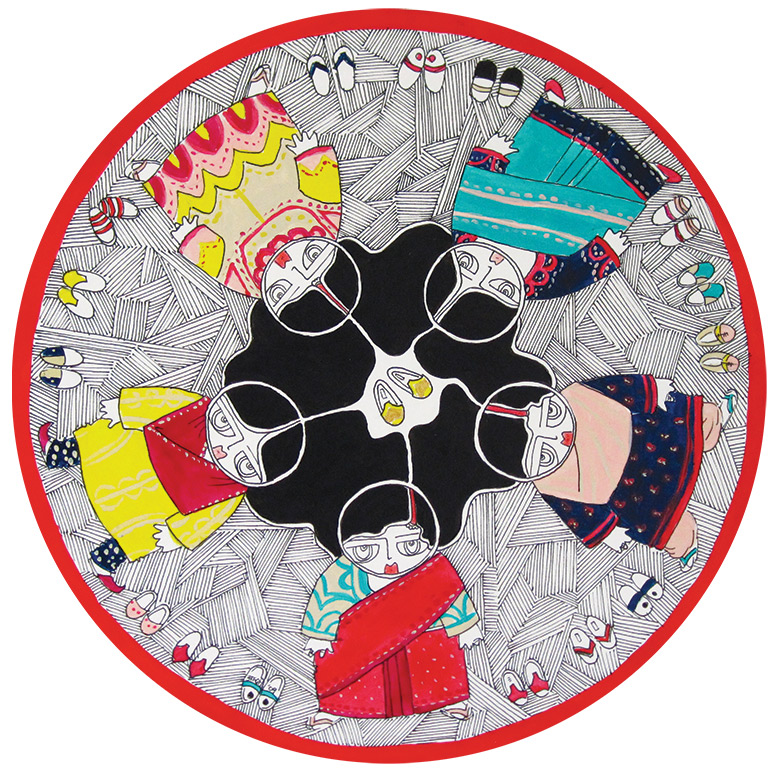
What changed my viewpoint was not so much the serials’ storylines, but realising how much of the stories’ communication lay embedded in the clothing and the various strategies of sartorial branding that brought unique characters to life as they navigated highly improbable family drama scenarios wearing equally unrealistic or impractical clothing.
I recall being on a sabbatical at home in Solan (Himachal Pradesh, India) writing up the final chapters of my book. And while doing so, I spent many months watching the twists and turns of Anandi’s life in Balika Vadhu (Child Bride, Colors TV, 2008-2016) and in close succession the frustrating naïveté and gullibility of Madhubala in Madhubala- Ek Ishq Ek Junoon (Colors TV, 2012-2016). I was a captive audience because these serials were chosen by my mother who had complete command over the remote control. As we watched in a trance, half-distracted by dinner and everything else that was happening at home, the repetitive screen shots and periodic loud exclamations with extreme close-ups highlighted the most notable parts of the day’s story and brought us to attention. These loud exclamations echoed across the neighbourhood where others like us were watching the same or similar television serials. During the day, there would be occasional chatter amongst neighbours about the previous evening’s storyline; while in the local bazaar, fabrics and clothing that mirrored loosely the styles we had been watching for a few weeks would crop up for sale.
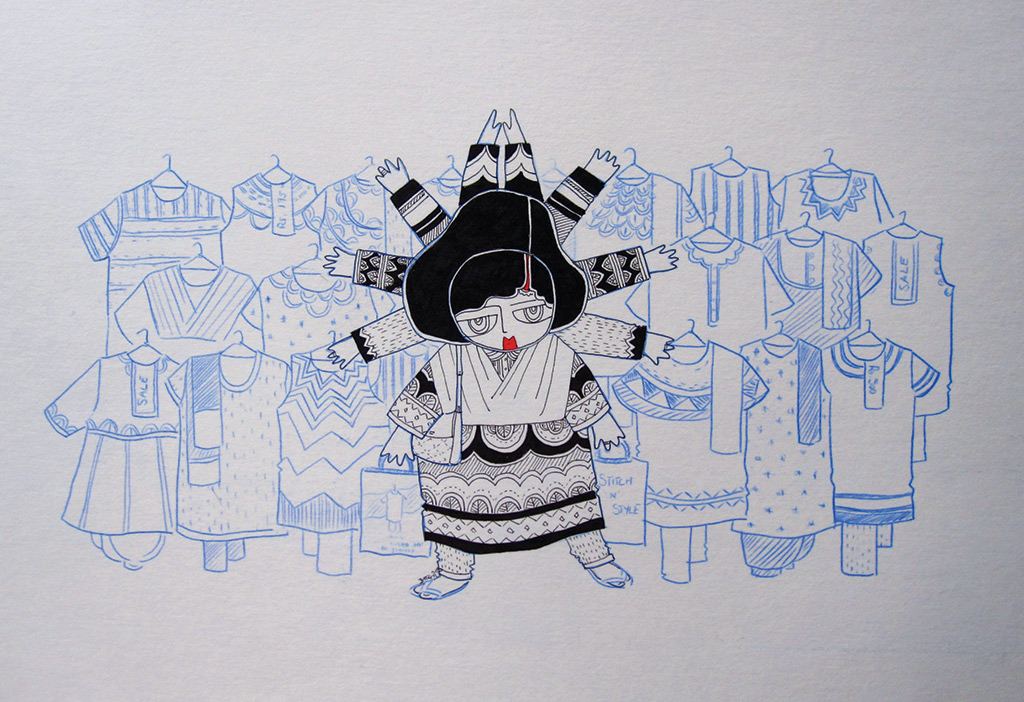
As the name suggests, ‘saas-bahu’ serials are usually centred around a joint family setting where, unlike Bollywood film plots, women of the household have predominance in the storyline. Typically, these shows tend to begin with a core group of family members, but over time, and various time jumps, new family members, new generations and external side roles and subplots come and go over multiple seasons – all geared to extend the life of the serial. Female protagonists who play the lead roles are often portrayed as overbearing, scheming and even downright evil characters. Collectively, these serials represent a genre of television programming that acts as a site for the promotion and rediscovery of traditional values, societal structures and gender roles, where Indian heritage is often turned into a spectacle through over-the-top celebrations of religious rituals and Indian festivals. Clothing plays a key role in creating this spectacle, as it is colour coded and curated in ways that had never been seen on television in the days of Buniyad or Udaan. In comparison to these older programmes, saas-bahu fashions, although within the means of acceptable modesty, almost always appear dialed up in terms of formality, opulence and surface decoration, with an emphasis on newness and novelty. These bear little resemblance to the more casual and well-worn clothing usually worn at home in India, yet this disconnect has not impeded its stylistic success, which begs us to give serious consideration to this genre.
Close inspection of the clothing (and related design processes), highlights how their design deliberately facilitates sartorial storytelling through communicating key aspects about the characters and the plot. The choice of colours and cuts can tell the audience if the character is young (Anandi wore bright lahariya fabrics as a child in Balika Vadhu), evil (remember Komolika in the original Kasautii Zindagii Kay and her extravagant and risqué blouses?), or one who stands out through age and experience (think of Dadisa’s earthy tones and modest blouses embellished only with block-printed bias tape, also in Balika Vadhu).
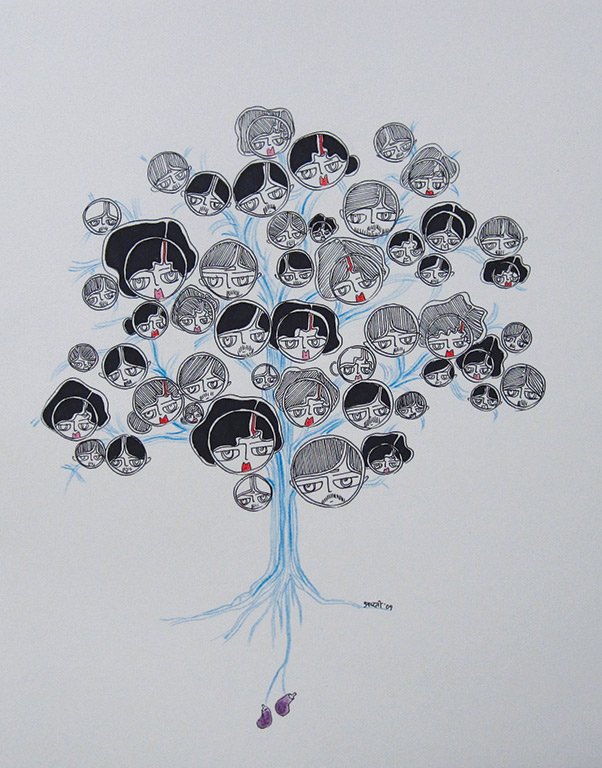
Through being based around a core group of one or two (interlinked) joint families and some close friends situated in smaller Indian cities (often in the Rajasthan/Gujarat and Haryana/Uttar Pradesh regions), costumes for saas-bahu shows in particular tend to first capture the regional specificity of the plot. However, to maintain audience interest, designers try to experiment and innovate through including new techniques and technologies of embroidery, layering, draping, fabric combinations, and so on, as this allows for a fresh approach on relatable clothing and keeps the styles aspirational for local audiences.
As an example, in the case of Balika Vadhu, designer Winnie Malhotra blended not only costumes of Rajasthan (as the show is set there) but also aspects of Gujarati regional styles. Female characters wore either ghagra choli, with a heavy ghunghat featuring embellished borders and even patch-worked panels, or saris where the pallu covered the head and shoulders. Since the storylines for such programmes are usually based around multiple characters whose backgrounds are mapped out in great detail, the majority of the costumes are designed keeping the entire cast’s look in mind. Once a character’s look is fixed, designers try to stay within those boundaries to maintain cohesion and continuity for the show. If the character wears printed saris in reel-life, for example, she will not wear a plain one all of a sudden, as one would in real life. Such ‘sartorial branding’ of a character’s look has been extremely successful. Nowadays, while many of the storylines have slowly evolved from the days of Kyunki Saas Bhi Kabhi Bahu Thi, (KSBKBT, 2000-2008, Star TV, 1800+ episodes) or Balika Vadhu where the emphasis was on saas-bahu dynamics, location specificity is still apparent in the clothing, as is the unrealistic emphasis on formal and ornamental clothing teamed with a lack of personal space for even the most independent of characters (such as those portrayed in Bepannah, Colors TV) in many of the scenes.
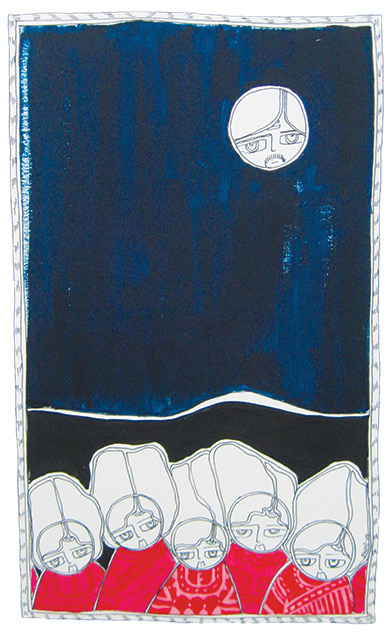
Nowhere else is the impact of saas-bahu serials more apparent than in the story of Tulsi, played by Smriti Irani in KSBKBT. For women across India, Tulsi presented an ideal woman – a daughter-in-law of a big household who had to adhere to all the expected societal and sartorial requirements imposed on her due to her role, and yet managed to hold her own and answer back to her [dominating] mother-in-law. The visual and conceptual dichotomy of presenting Tulsi as an empowered woman, who maintains the household while wearing a sari, did not impinge on her success, which points to the deep understanding of such juxtaposed themes within Indian society. Eighteen years after Season 1 of KSBKBT and Tulsi’s transition from salwar-kameez to a bahu wearing saris draped in a demure Gujarati style that set numerous fashion trends, Smriti Irani is once again impacting Indian fashion through being India’s Textiles Minister who has put #handloom at the forefront of her wardrobe and her work.
As for the disavowal of TV fashion from the larger discussion on fashion…Such is the nature of the fashion phenomenon and its reliance on a dichotomous model of self-definition that allows us to view saas-bahu style not as lacking in fashion quotient but as one that evolves relative to elite fashion, thereby legitimising its worthiness.
__________________________________________________________________________
All images relate to a series of illustrations titled Mahila Moments (2009–2013) Arti Sandhu made while watching ‘saas-bahu’ serials in Solan, and completing various parts of her book on Indian fashion. The drawings feature various fashion-related ‘mahilamandalas’ and clothing dilemmas and emphasise the detailing on saris and salwar kameezes.
Share